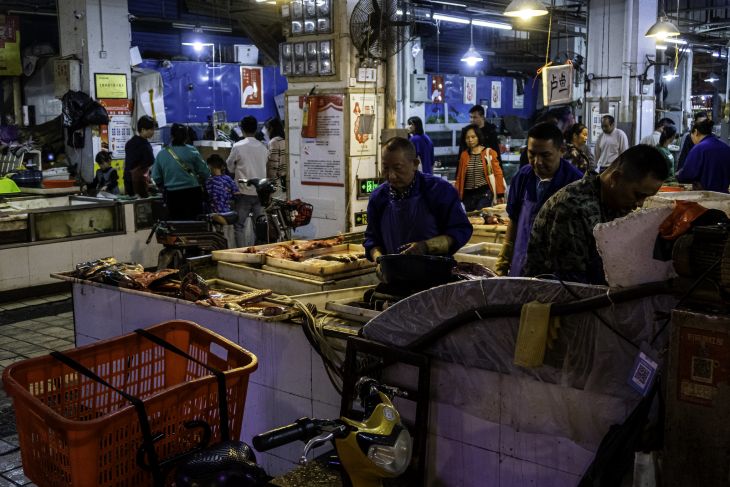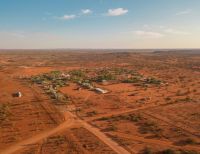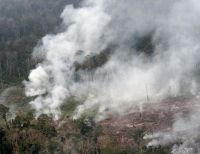The lab leak theory rests on an unfortunate coincidence: that SARS-CoV-2 emerged in a city with a laboratory that works on bat coronaviruses.
Some of these bat coronaviruses are closely related to SARS-CoV-2. But not close enough to be direct ancestors.
Sadly, the focus on the Wuhan Institute of Virology has distracted us from a far more important connection: that, like SARS-CoV-1 (which emerged in late 2002) before it, there’s a direct link between a coronavirus outbreak and a live animal market.
Consider the odds that a virus that leaked from a lab was first detected at the very place where you would expect it to emerge if it in fact had a natural animal origin – vanishingly low. And these odds drop further as we need to link both the A and B lineages to the market.
Was the market just the location of a super-spreading event? Nothing says so. It wasn’t a crowded location in the bustling and globally connected metropolis of Wuhan. It’s not even close to being the busiest market or shopping mall in the city.
For the lab leak theory to be true, SARS-CoV-2 must have been present in the Wuhan Institute of Virology before the pandemic started. This would convince me.
But the inconvenient truth is there’s not a single piece of data suggesting this. There’s no evidence for a genome sequence or isolate of a precursor virus at the Wuhan Institute of Virology. Not from gene sequence databases, scientific publications, annual reports, student theses, social media, or emails.
Even the intelligence community has found nothing. Nothing. And there was no reason to keep any work on a SARS-CoV-2 ancestor secret before the pandemic.
To assign the origin of SARS-CoV-2 to the Wuhan Institute of Virology requires a set of increasingly implausible “what if?” scenarios. These eventually lead to preposterous suggestions of clandestine bioweapon research.
The lab leak theory stands as an unfalsifiable allegation. If an investigation of the lab found no evidence of a leak, the scientists involved would simply be accused of hiding the relevant material. If not a conspiracy theory, it’s a theory requiring a conspiracy.
It provides a convenient vehicle for calls to limit, if not ban outright, gain-of-function research in which viruses with greatly different properties are created in labs. Whether or not SARS-CoV-2 originated in this manner is incidental.







